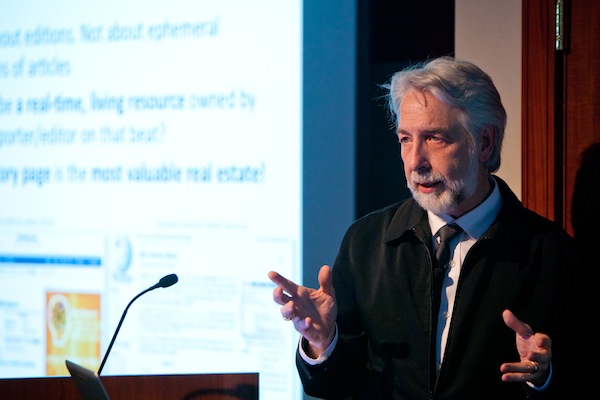 |
| Richard Gingras at Google Plus |
In this post, you'll see a range of resources that should help you understand the issues. If you're from a media organisation, and reading this page, make a decision now to either commit a few hours to it or walk away now. If you are bringing emotion to the table, step away, clear your head and come back later. For these ideas, and the solution lie in mathematics, algorithms and logic.
I'm delighted to be called a Citizen or an Independent. That gives me the freedom to think, act and publish as I wish. I'm a previous teacher, so from an educational background I act in the most altruistic way possible. My critics tell me I give away my ideas for free, I should be charging. I'm sure that's true, but for now there's a puzzle to be solved.
I also have no idea who is more powerful, a protester in Tahrir Square, Egypt, a guy with a laptop in a bedroom or the mainstream media. Everything has blurred. That's why I've created LIVE from the NEWS™ to make sense of the Blurring between What is News, Who makes it and the Audience who cope with it
The web is full of metaphors comparing the media with the audience. Everything from giving guns to deer to drinking form fire hoses to free satellite trucks. What I do know, is Richard Gingras does not claim he has the answers and neither do I.
As an introduction, start with this from Richard: Organisations, Innovation, Trust, Quality Sources, Connections, Rethinking, Computational Journalism, Query Strings, Fusion Tables, Editors, Reporters .. in a Real Time World .. It will take time .. (9 May, 2012)
As an introduction, start with this from Richard: Organisations, Innovation, Trust, Quality Sources, Connections, Rethinking, Computational Journalism, Query Strings, Fusion Tables, Editors, Reporters .. in a Real Time World .. It will take time .. (9 May, 2012)
Next, we have Google’s Richard Gingras: 8 questions that will help define the future of journalism where we have these areas of study. Allow five minutes to read the article and eight hours to think of the answers. I will come back to this area in future posts. As a stand alone guy, I can think freely. Those in organisations cannot.
1. Addressing content architecture
2. Evolving the narrative form
3. Creating the Reporter’s Notebook 2.0
4. Rethinking organizational workflow
5. Exploring computational journalism
6. Leveraging search and social
7. Rethinking site design
8. Shifting to a culture of constant product innovation
Google’s Richard Gingras: We are at the beginning of a journalism renaissance (16 May 2012)
The video from this post is 74 mins long .. I'm watching it all .. even if +Richard Gingras says something slightly differently, makes a gesture or even coughs .. I know it'll be worth it .. after that I have to translate his 8 Questions into something many can action .. for there we have it .. people are too busy to adjust, to shift their balance and cut new ice ..
EDIT: I shared this post a few days back where I had the text version of this talk: http://goo.gl/w0bAX
SF State Journalism Department Speaker Series Presents: Richard Gingras
Many would complain about the quality of this video .. for me audio is clear, I understand every inflection in +Richard Gingras voice ..
I'm liking his early point of .. If you are not embarrassed by the first thing you publish, you're not doing it fast enough. Get it out there ..
If you still have an appetite for this line of study, contrast what you have seen so far with this address when Richard Gingras was still the CEO of Salon Media Group The event was co-hosted by the University of Nevada, Reno and the University of South Carolina schools of journalism. recorded (14 November, 2009).
Video streaming by Ustream


No comments:
Post a Comment
For help adding links see How to add in line links